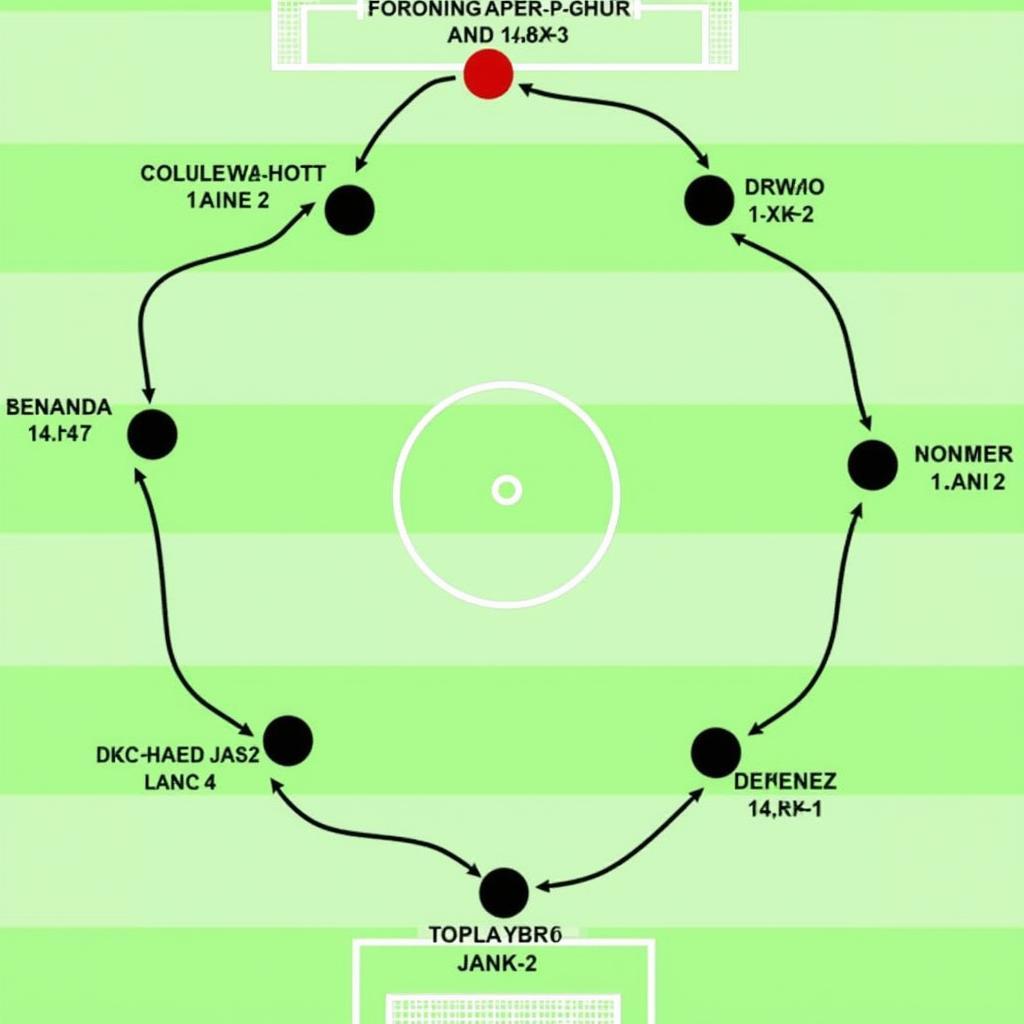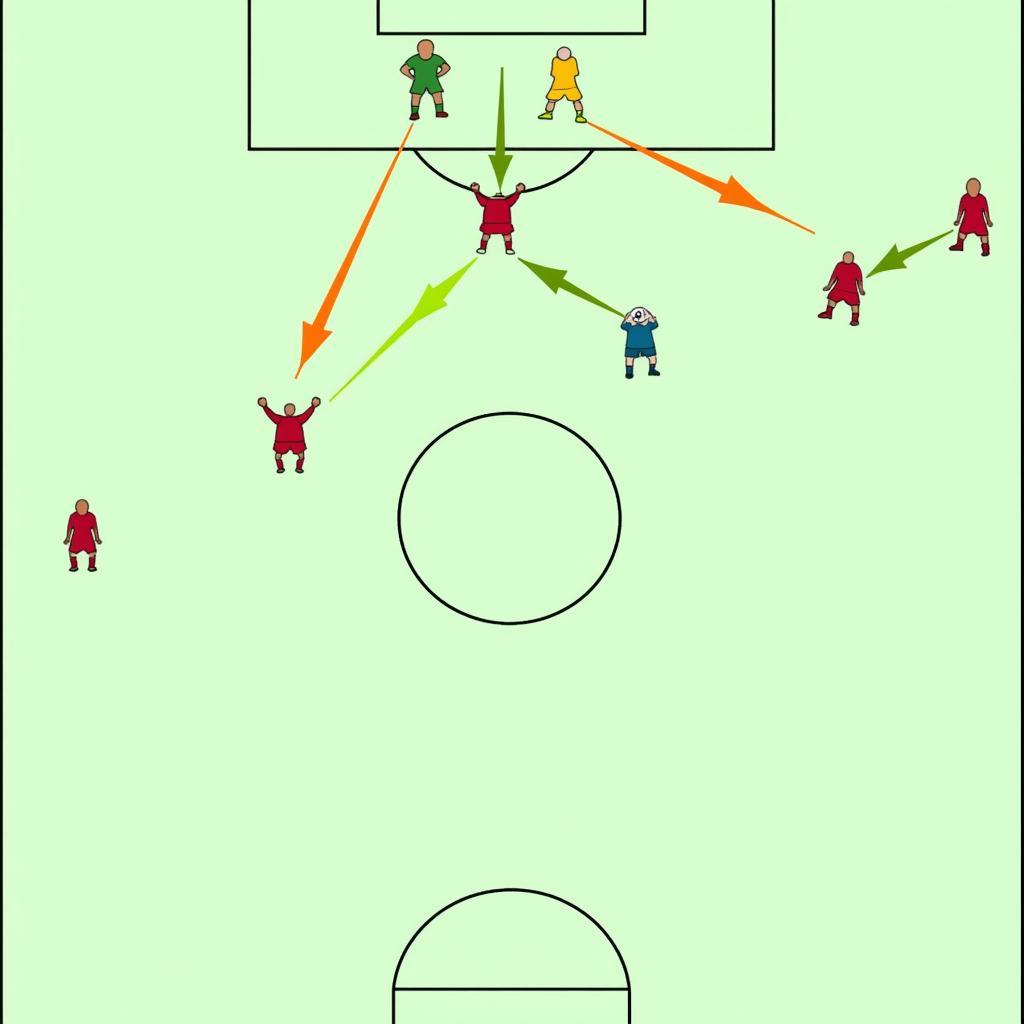Understanding Soccer Player Diagrams
November 14, 2024Soccer player diagrams are essential tools for analyzing team formations, player positioning, and tactical strategies. Whether you’re a coach, a player, or a passionate fan, understanding these diagrams can significantly enhance your appreciation for the beautiful game. From basic formations like the 4-4-2 to more complex systems, these visual representations provide a wealth of information at a glance. They allow you to dissect the intricacies of soccer, identify strengths and weaknesses, and ultimately gain a deeper understanding of how the game unfolds. Let’s dive into the world of soccer player diagrams and explore their various aspects. You might be surprised at how much you can learn from these seemingly simple illustrations. For example, have you ever wondered about the role of a young, promising cầu thủ trẻ việt nam? Diagrams can help illustrate their potential impact on a team’s strategy.
Decoding the Basics of Soccer Player Diagrams
Soccer player diagrams utilize symbols to represent players and their positions on the field. Circles typically denote players, while lines connecting them often indicate passing lanes or defensive responsibilities. The diagram is a bird’s-eye view of the pitch, showcasing how a team is organized both offensively and defensively. Understanding the different formations, from the classic 4-4-2 to the more dynamic 4-3-3, is crucial for interpreting these diagrams.
Different shapes and colors might be used to represent different player roles, such as a goalkeeper, defender, midfielder, or forward. Arrows can illustrate player movement and planned attacking strategies.
 Basic Soccer Player Diagram: 4-4-2 Formation
Basic Soccer Player Diagram: 4-4-2 Formation
Tactical Analysis Using Soccer Player Diagrams
Beyond simply showing player positions, soccer player diagrams offer valuable insights into a team’s tactical approach. By studying the spacing between players, you can identify potential weaknesses that opponents might exploit. Conversely, you can also recognize opportunities for creating passing lanes and launching effective attacks. Imagine analyzing the strengths of a w johnson cầu thủ bóng đá using such a diagram; it would be incredibly insightful.
These diagrams also allow for the visualization of set-piece routines, such as corner kicks or free kicks. They illustrate designated player movements and intended target areas, showcasing the team’s planned strategy for maximizing their chances of scoring.
 Soccer Player Diagram for Tactical Analysis: Attacking Strategy
Soccer Player Diagram for Tactical Analysis: Attacking Strategy
Advanced Concepts in Soccer Player Diagrams
More complex soccer player diagrams incorporate additional information, such as heatmaps or passing networks. Heatmaps visually represent the areas of the field where a particular player spends the most time, providing valuable insights into their playing style and contribution to the team. Passing networks depict the frequency and direction of passes between players, highlighting key playmakers and potential areas for improvement in ball distribution. Some diagrams even include statistical data, such as the number of successful tackles or interceptions, further enhancing their analytical value.
How do diagrams help in analyzing individual player performance?
Diagrams can be used to analyze a player’s movement, positioning, and involvement in the game, helping to assess their strengths and weaknesses.
What are some common soccer formations illustrated in these diagrams?
Common formations include 4-4-2, 4-3-3, 3-5-2, and 5-3-2, each with its own strengths and weaknesses. For instance, the 4-4-2 is a balanced formation, while the 4-3-3 offers more attacking prowess. Finding a cost-effective cầu thủ 8 giá rẻ can be beneficial for any team.
Conclusion
Soccer player diagrams are indispensable tools for anyone seeking a deeper understanding of the beautiful game. From basic formations to advanced tactical analysis, these visual representations unlock a wealth of information about team strategies, player positioning, and individual performance. Whether you’re a coach devising game plans, a player striving to improve your game, or a fan seeking a more nuanced perspective, understanding soccer player diagrams is essential for appreciating the complexities and intricacies of soccer. By studying these diagrams, you can gain a richer appreciation for the tactical battles that unfold on the pitch and enhance your overall enjoyment of the sport. Thinking about the visual appeal of a cầu thủ bóng rổ đẹp trai reminds me of the similar impact a well-structured soccer player diagram can have. Understanding these diagrams allows one to appreciate the strategic beauty of the sport.
FAQ
- What are soccer player diagrams?
- How do I interpret the symbols in a soccer player diagram?
- How can soccer player diagrams be used for tactical analysis?
- What are the benefits of using heatmaps and passing networks in soccer player diagrams?
- Where can I find reliable resources for soccer player diagrams?
- How can soccer player diagrams help improve my coaching or playing skills?
- Are there any software or tools available to create my own soccer player diagrams?
Contact Us
For any assistance, feel free to contact us:
Phone: 0396443476
Email: [email protected]
Address: 23 Tháng 3, Đắk Nia, Gia Nghĩa, Đắk Nông, Việt Nam.
We have a 24/7 customer support team.